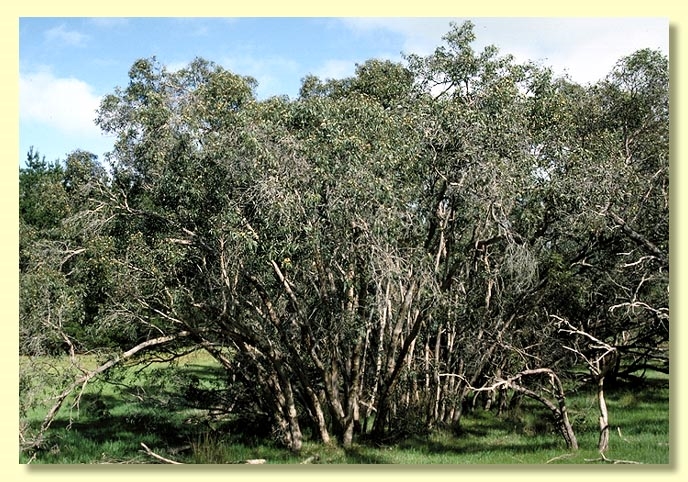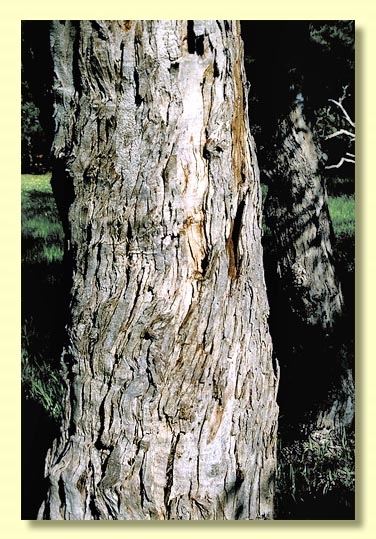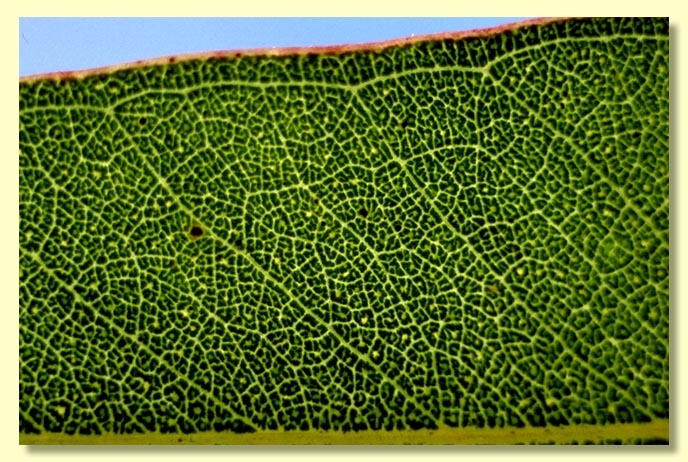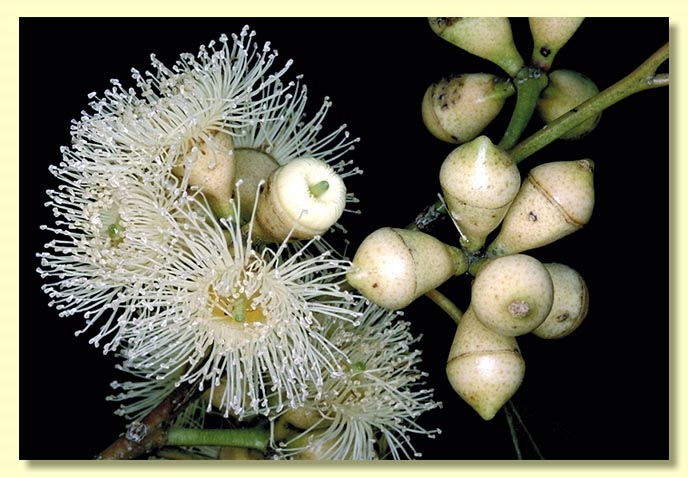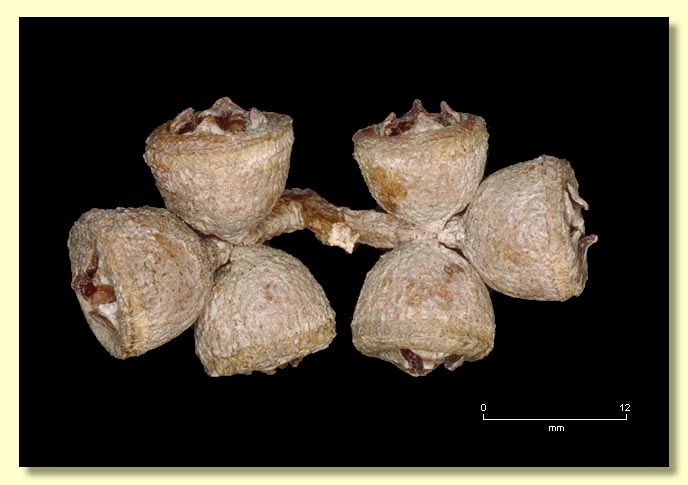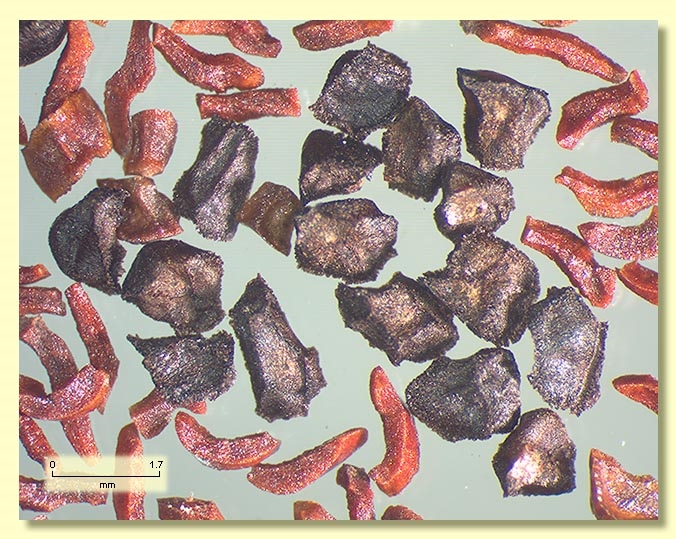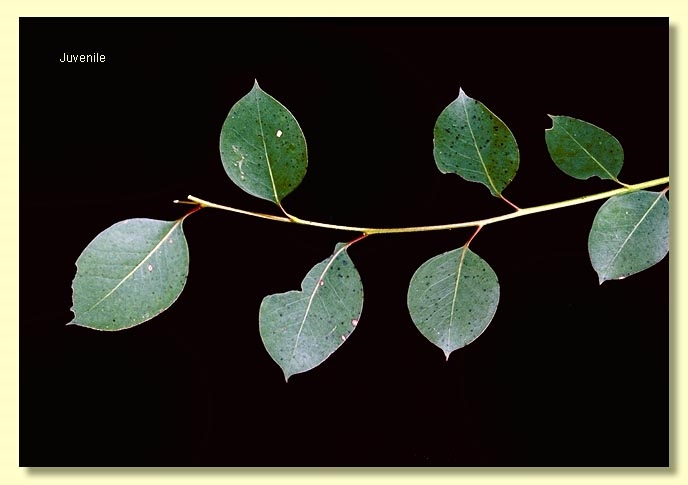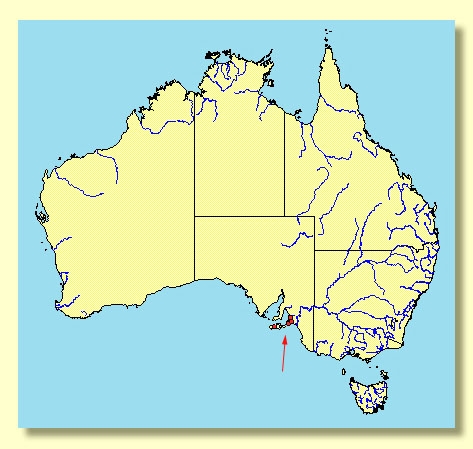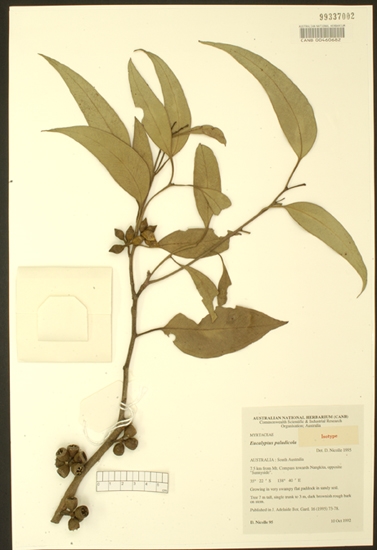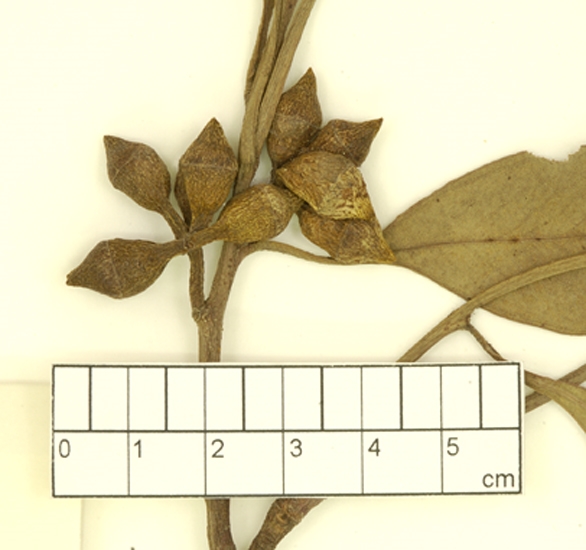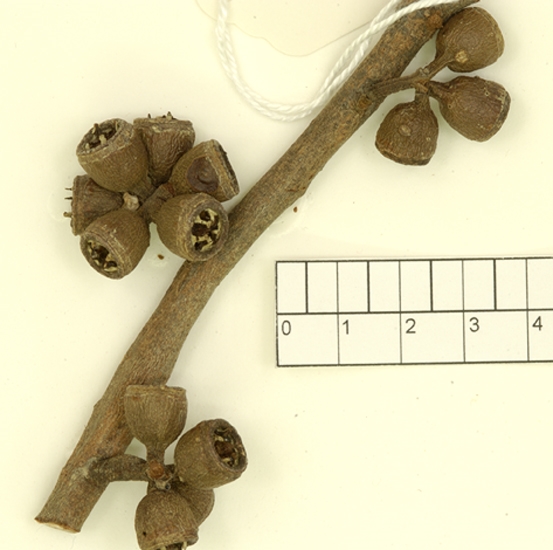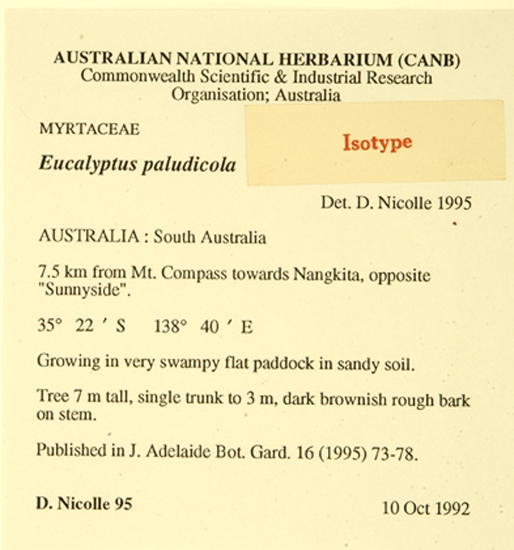Euclid - Online edition
Eucalyptus paludicola
Eucalyptus | Symphyomyrtus | Incognitae
Bark smooth throughout or with some persistent, loose fibrous dark brown bark on lower stem; smooth bark pale brown, cream pink or grey, sometimes becoming granular with age.
Juvenile growth (coppice or field seedlings to 50 cm): stem square in cross-section; juvenile leaves always petiolate, opposite for 6-?12 nodes then alternate, broadly ovate to ovate, 4–10 cm long, 2.8–7 cm wide, base truncate or tapering to petiole, slightly discolorous to concolorous, dull, green.
Adult leaves alternate, petiole 1–2.5 cm long; blade lanceolate to falcate, 8–21 cm long, 2–4 cm wide, base tapering to petiole, concolorous, slightly glossy or dull, dark green to blue-green, side-veins greater than 45° to midrib, densely to very densely reticulate, intramarginal vein well removed from margin, oil glands mostly intersectional, or obscure.
Inflorescence axillary unbranched, peduncles 0.5–1.5 cm long, buds (3)7, pedicellate (pedicels 0.1–0.5 cm long). Mature buds clavate (1–1.3 cm long, 0.7–0.9 cm wide), creamy in colour, smooth, scar present, operculum conical to rounded to beaked, stamens inflexed, anthers cuboid to oblong, versatile, dorsifixed, dehiscing by longitudinal slits (non-confluent), style long, stigma blunt, locules 3 to 5, the placentae each with 6, sometimes 4 or 8, vertical ovule rows. Flowers usually white.
Fruit subsessile to pedicellate (pedicels (0)0.1–0.6 cm long), cylindrical, obconical or campanulate, 0.8–1.3 cm long, 0.9–1.5 cm wide, not or only slightly angled, disc level or descending, valves 3 to 5, exserted or near rim level.
Seeds black or dark grey, 1.5–2.5 mm long, flattened-ovoid to cuboid, with ridged ventral surfaces and toothed rim, dorsal surface shallowly pitted or smooth, hilum ventral or terminal.
Cultivated seedlings (measured at ca node 10): cotyledons bilobed; stems square in cross-section; leaves shortly petiolate at first becoming longer up stem, opposite for 10 or more nodes then alternate, ovate to deltoid, 4–5.5 cm long, 2.5–5.5 cm wide, base truncate to tapering, margin entire, apex rounded or pointed, dull, green.
Flowering has been recorded in May, October and December.
A small tree restricted to a few sites on Fleurieu Peninsula, south of Ashbourne to Waitpinga, and one population on Kangaroo Island in Kelly Hill Conservation Park in South Australia. E. paludicola occurs in small, more or less pure stands in broad swampy gullies. It usually occurs near or with E. ovata, which differs by the smaller, rhomboidal buds and obconical fruits and glossier, undulate leaves, and near E. cosmophylla, which occurs in well-drained situations and differs in the three-budded inflorescences and larger buds and fruits (fruit to 2.2 cm wide in E. cosmophylla).
Eucalyptus paludicola is one of two species in Eucalyptus subgenus Symphyomyrtus section Incognitae having cotyledons bilobed, leaves concolorous with intersectional or obscure oil glands, erect inflorescences with buds in threes or sevens, buds with two opercula, inflexed stamens and ovules usually in six rows, and fruit with valves not enclosed. E. paludicola is closely related to E. cosmophylla and differs as outlined above.

